Few hunters ever learn how to score a buck correctly. If you are a new deer hunter, texting your buddies, and bragging, it’s a point count. Somewhere along the way, you hear about two other ways to measure your buck, weight and a Boone and Crockett score.
Weighing a buck seems like an unnecessary hassle, especially if you hunt and butcher by yourself. Figuring your buck’s Boone and Crockett score sounds complicated—and does telling your friends your buck scored a three-digit number mean anything to them or you?
Related: The three best deer hunting calibers.
Related: The best place to shoot a deer.

Look, I’m going to be very straight with you here. Let’s say someday you shoot a buck with the highest Boone and Crockett score. What, other than bragging rights, will that bring you? Fame is a fickle mistress, and the best you can hope for is five years after you die, your kids finally remove that plastic replica of your trophy from their front yard.
Sure, I spent a stupid amount of time writing this article on how to score your buck. But I beg you to count the tines, text a few pictures, and enjoy your moment. If you are forever comparing yourself to some lucky hunter who broke a record before you were born, you won’t enjoy deer hunting as you should. It’s been three decades since anyone set a new record.
You can start by downloading and printing Boone and Crockett Club’s® OFFICIAL SCORING SYSTEM FOR NORTH AMERICAN BIG GAME TROPHIES. Next, you’ll need a soft tape measure, masking tape, and a pen or pencil to record your measurements.
Related: Understanding buck snorts.
How to score a buck.
Deer hunters use a variety of ways to score their bucks, ranging from the fast and easy antler point count to a full Boone and Crockett (BC) score. Between those two scoring methods, there is a sane, happy medium ranging from outside spread to not measuring the unused data for the BC score (points per side, outside spread, etc.).
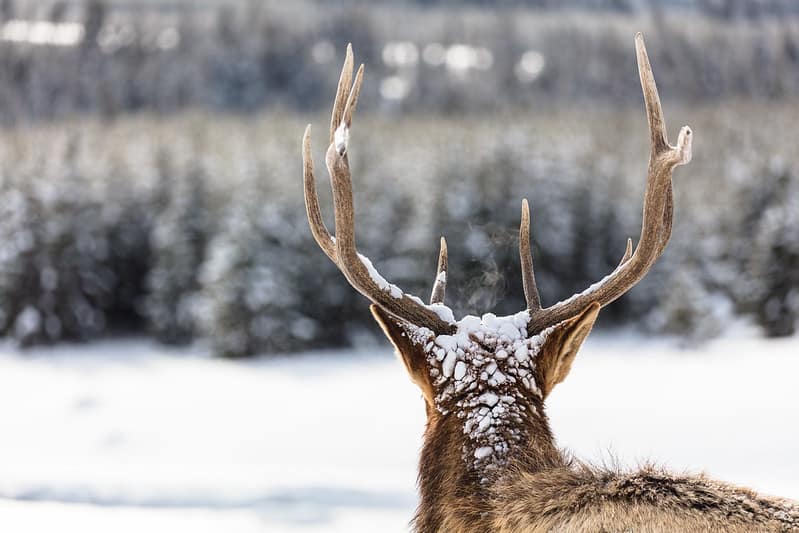
A buck’s rack consists of brow tines pointing straight up from the top of the head, the main beam, and any branches (tines) coming off the main beam. The brow tines, main beams, and any tines coming off the main beam all count as ”points.”
Scoring a deer rack, the easy way.
All new deer hunters, and the majority of those with years of experience, do nothing more than count antler tips on each side. The points per side count is often a requirement for reporting your harvest to the state—and is the fastest way to brag to your hunting friends.
And no matter how much time and effort you put into scoring your buck, you’ll always measure your success every year by bagging bucks with more and more tips.
Over time, however, deer hunters start looking for bigger and better racks. Bigger sets of antlers and the rack’s symmetry begin to become important. Broken, misshapen, and missing tines ruin a rack’s overall look.
Related: What are deer warts?
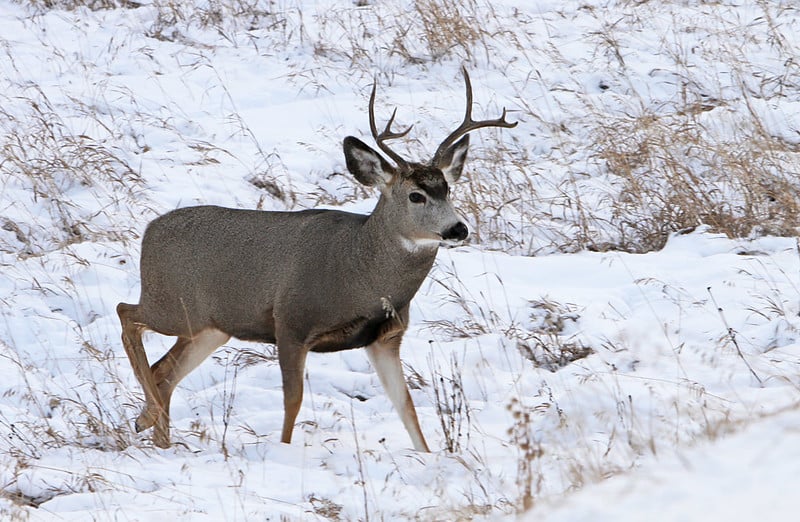
There are two caveats to counting tines. First, many do not count any point less than 1” in length. This rule doesn’t apply to buddy reporting. Second, mule deer brow tines are non-existent or very small. As a rule, mule deer tines are not counted in any point system.
Related: Deer feed and baiting deer.

Typical vs. non-typical racks.
A non-typical rack has extra points outside the normal pattern, split points (on whitetails), kickers, drop tines, or points growing from other points.
Sometimes non-typical bucks are obvious to discern; think ”ugly.” Some may have so many points it takes a while to count them all.
The only time typical vs. non-typical comes into play is when scoring a buck for something like a BC score. When scoring a typical buck, abnormal points get deducted from your score. When scoring non-typical bucks, abnormal points get added.
The big difference between the scoring of a typical and a non-typical rack is the lengths of the abnormal points are added into the final net score. On a typical buck, these measurements are subtracted on the score sheet. Most non-typical points consist of simple spits and kicker points. Things like drop tines are much less common to encounter.
Using outside dimension to score a buck.
The next step above counting points to score a buck is measuring the outside dimension. This is outside antler spread measured in inches.
Related: When are the best hours of the day for hunting deer?
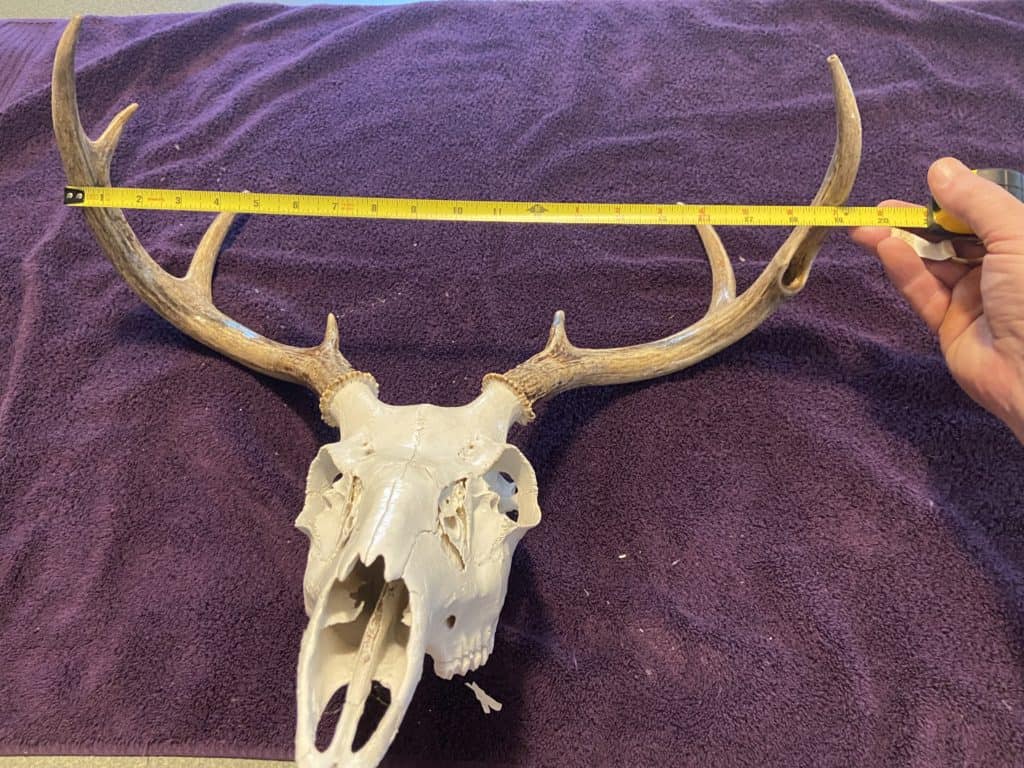
Many deer hunters with a few years of experience under their belts like to use this as the only measurement when reporting a harvest to their friends.
Buck scoring using the Boone and Crockett system.
Tips before you begin a measuring for a BC score.
- The rack must be allowed to dry for 60 days.
- Measure to the closest 1/8 inch.
- Take all measurements in 1/8 inches. Using this fraction makes your final calculations much more manageable—for example, record 15 1/2 as 15 4/8.
- Do not count the main beam’s point as part of the overall point count (it is already covered main beam measurement).
- I prefer to use cloth tape for most measurements because steel tape measures and yardsticks don’t easily bend for some of the other measurements.
- Only points one inch or longer get scored.
- The rack must be allowed to dry for 60 days.
- Measure to the closest 1/8 inch.
- Take all measurements in 1/8 inches. Using this fraction makes your final calculations much more manageable—for example, record 15 1/2 as 15 4/8.
- Do not count the main beam’s point as part of the overall point count (it is already covered main beam measurement).
- I prefer to use cloth tape for most measurements because steel tape measures and yardsticks don’t easily bend for some of the other measurements.
- Only points one inch or longer get scored.
Related: Do deer scents work?
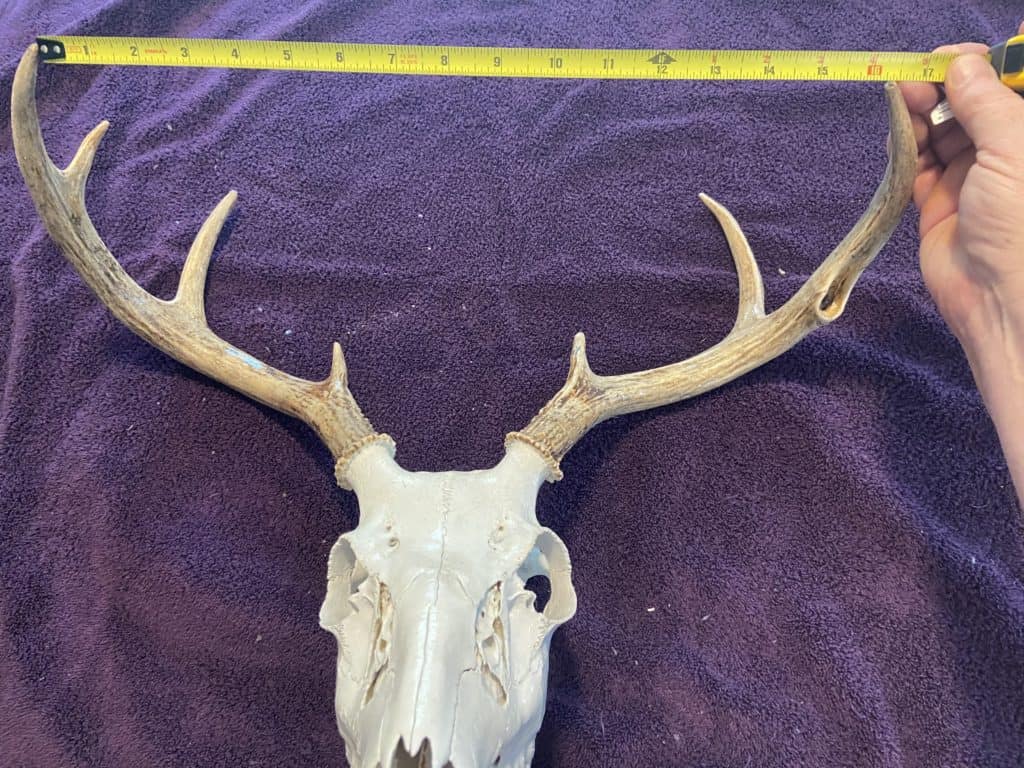
Step One: Measuring inside spread. With the rack held upright and the tape parallel to the top of the deer’s skull, measure the widest space between the beams of the antlers.
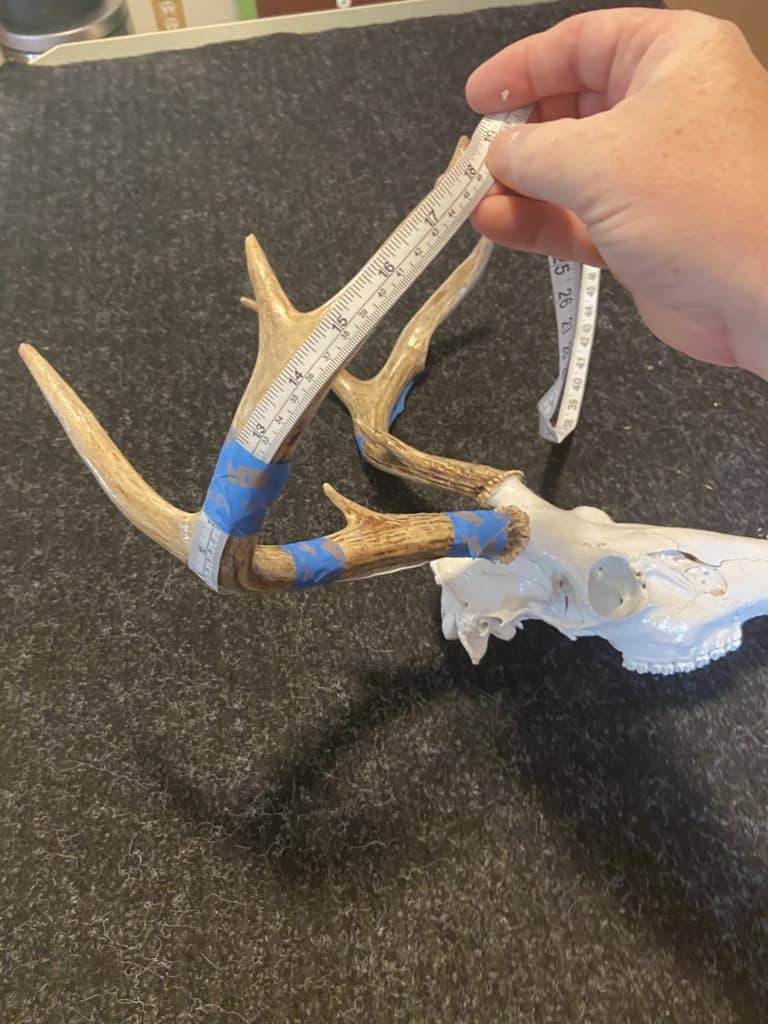
Step Two: Measuring the main beams. Place the tape at the burr edge where it meets the skull and measure along the middle of the main beam on the outside, to the antler tip. Record and repeat for the other side.
A lot of people prefer to use a string when taking these recordings. Using string, you can compare the measurement to a tape measure on a flat surface and record that number. Either way, a bit of masking tape helps hold everything in place.
Step Three: Now, measure the points.
Start by measuring the brow tines (G-1 on the BC form), then measure the length of each point (G-2, G-3, G-4, etc.), remembering not to count the last point of the main beam. In the photo above, for a BC score, this buck has 3 points on the left and two on the side—this must be recorded in Box A.
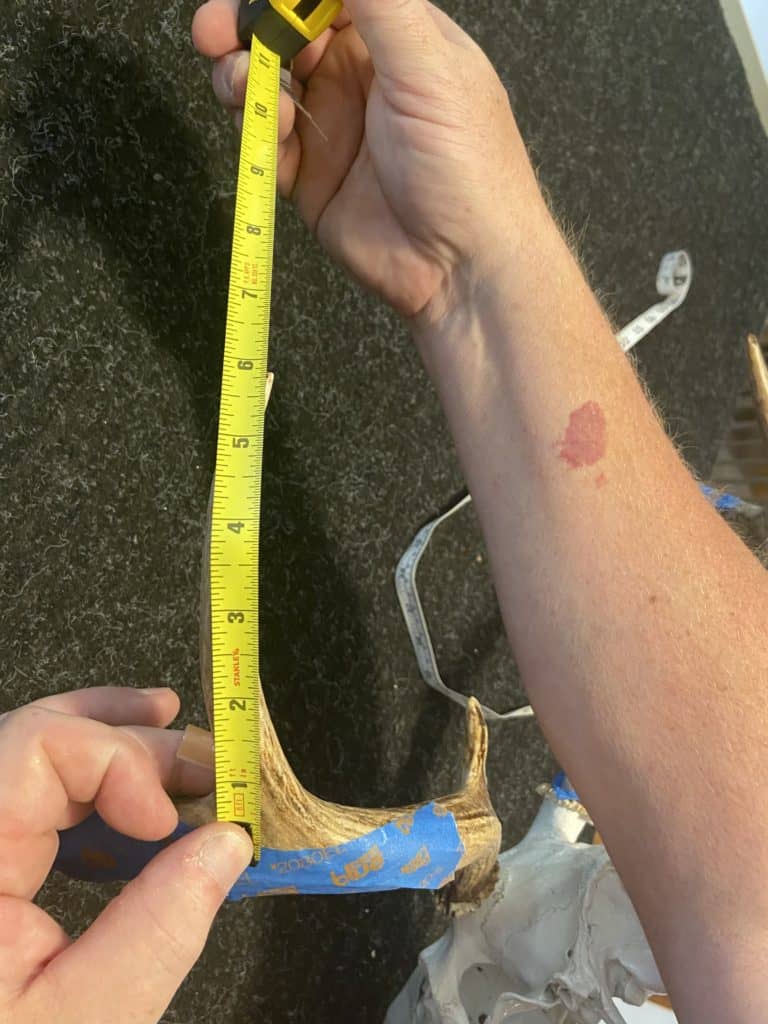
When measuring the tines, it’s more accessible to start by stretching the painter’s tape along the top edge of the beam. You can then measure from the top edge of the tape to the antler’s tip. During this step, you must only measure tines that grow up and out of the main beam. All other points will fall into the abnormal category (section E of the BC form).
After measuring and recording the normal points for both sides, measure all the abnormal points and record the total lengths for both sides.
Note: What about abnormal points that measure less than one inch? I could nothing requiring me to add such points, and therefore reducing my overall score. Sauce for the goose, perhaps?
Step Four. Measure antler mass. Antler mass is equated to a buck’s age. The older a buck, the great mass his antlers will have, as measured by their circumference.
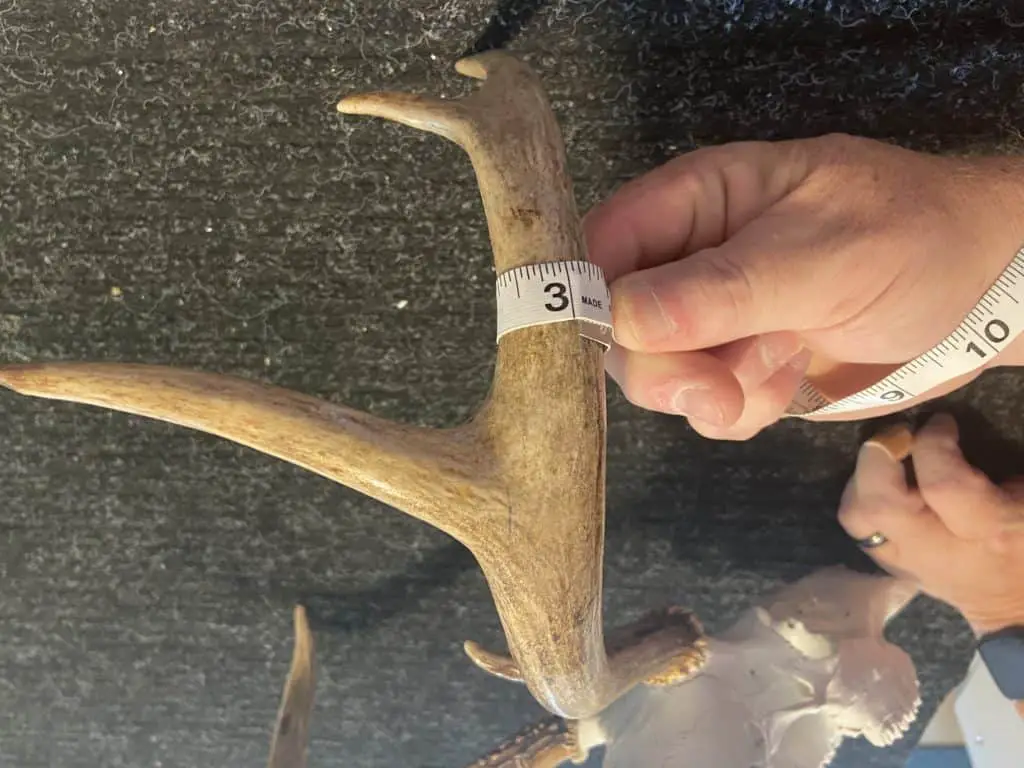
You will now measure and record the antler’s circumference at four points (H-1 through H-4). Using cloth tape here is relatively easy to do by yourself. Note: There are always four points to measure, regardless of the number of tines.
The four measuring points are taken at the smallest place between the two listed locations (burr and first point, first and second point, second and third point, and third and fourth point) if your buck is an 8-pointer or less, measure between G-3 and the end of the main beam.
Note: Measure at the smallest circumference. The BC says to measure at the smallest point, not the mid or thickest. As you can see in the photo above, I’m not doing that—and that is how most hunters cheat on their buck scores.
Record these measurements for one side, then repeat on the other side of the rack.
Step Five. Keep the gross score or go for the full Boone and Crockett tally.
If you want to just brag, add all the measurements you have just recorded and report your gross score. If you have a potential record setter, then deduct the abnormal points and asymmetry between racks and fill out page two of the form.
What does ”spread credit” mean when you score a buck?
You will note the BC form’s box for spread credit, but what does it mean.
The spread credit of a buck is when an inside spread measurement is larger than the longest beam measurement. In these cases, the longer beam measurement is put into the spread credit box on the Boone and Crockett score sheet instead of the inside spread measurement. So, if your inside spread is 18” and the main beams are 19” and 20”, then your spread credit is 18. If the beams were instead 16” and 17”, then your spread credit would be 17” (whichever side is longer).
Related: The four easiest deer hunting mistakes to avoid.
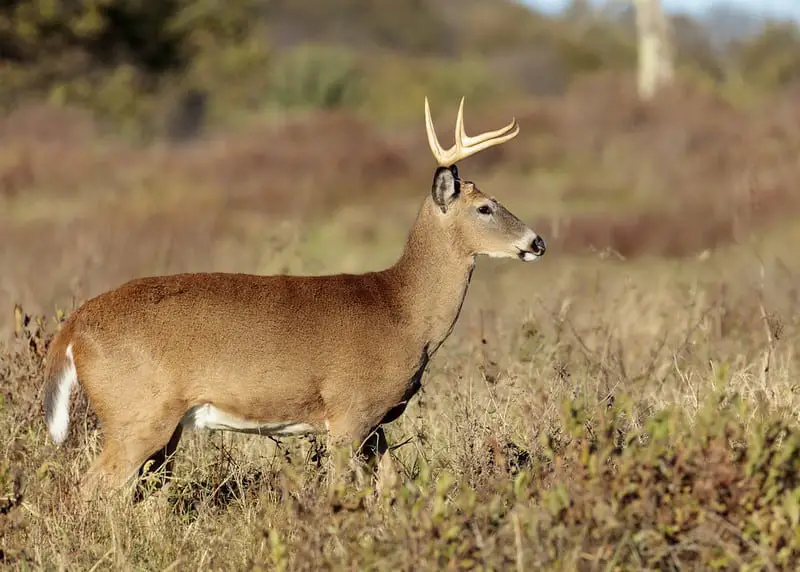
How you score your buck depends on you.
Some hunters are in only for the venison. They will tell you it takes a long time to boil a rack to its edible point. For these hunters, all that matters is weight. Other hunters want the youngest does or bucks for their tables; weight and rack size never figure into their recipes or calculations.
For most trophy hunters, not seeking a world record, the number of points is the only way they will ever score a buck’s rack. Given enough time, they may toss in the outside dimension to add a little to their bragging.
Measuring and calculating a total BC score is probably something most deer hunters will never do. But every system used to score a buck’s rack is a personal decision and reflects on the hunter’s reason for deer hunting in the first place.
Bragging right, prestige, or a shot at the title, whichever you choose, remember always to enjoy your time and the field. And if you score a buck, a record-breaking buck, don’t count on fortune to follow any fame.

